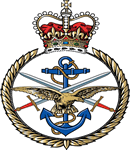 |
Battle or Action:
HMS Princess Irene, Accidental Sinking of
|
 |
Detail : |
In May 1915, at about 11.14 on the morning of 27th May 1915, Sheerness witnessed the destruction of the minelayer HMS Princess Irene. She was was on No.28 buoy about 3 miles WSW from the town centre, moored in Saltpan Reach, on the Medway Estuary in Kent between Port Victoria and Sheerness, being loaded with mines in preparation for deployment on a minelaying mission. At 11:14 GMT, Princess Irene exploded and disintegrated. A column of flame 300 feet (100 m) high was followed a few seconds later by another of similar height and a pall of smoke hung over the spot where Princess Irene had been,reaching to 1,200 feet (400 m). Two barges laying alongside her were also destroyed. The explosion was larger than that which had destroyed HMS Bulwark in the Medway six months earlier, although the loss of life was less.
The Princess Irene had a complement of 225 officers and men, three of whom were ashore that morning as the mines were being primed on the ship's two mine decks. Also on board were a party of 80 or so Petty Officers from Chatham in addition to 76 Sheerness Dockyard workers who were completing tasks prior to the ship's planned departure to lay her mines on 29th May. Without warning, the ship was blown to pieces and her remains, and the remains of those on board, were scattered over a wide area of the surrounding river and countryside. One of the Chatham Dockyard workers, David Wills, amazingly survived the explosion but few bodies were found. Those that were located were buried in Woodlands Cemetery in Gillingham. A memorial to those lost in both this and the Bulwark disaster is situated opposite Sheerness Railway Station. The cause of the disaster was thought to have been due to a faulty primer (pistol) although evidence at the Official Enquiry showed that the work of priming the lethal mines was being carried out a) in a hurry and b) by untrained personnel.
The lower decks and keel of the Princess Irene remain more or less intact and have caused a degree of navigational problems to the large ships now using the eastern end of nearby Thamesport. At present there are no plans to raise her remains. A total of 352 people were killed, including 273 officers and men, and 76 dockyard workers who were on board Princess Irene. 7 of them were freemasons.
The ship had been built in Scotland in the previous year to the order of the Canadian Pacific Railway Company but was requisitioned and converted for Naval use before she could sail to the Pacific. |
|
FIRST PREV ( Page 1 of 1 ) NEXT LAST
|